Skip to main contentProvenanceThe artist
Margo Pollins Schab, Inc., New York, New York
Terra Foundation for the Arts Collection, Chicago, Illinois, 1996
Exhibition History
Henry Billings
(American, 1901–1987)
Marine Elements
1937
Screenprint (printed in colors using stencils) on textured off-white paper
Image: 8 7/8 x 14 in. (22.5 x 35.6 cm)
Sheet: 13 1/16 x 19 7/8 in. (33.2 x 50.5 cm)
Mat: 18 x 24 in. (45.7 x 61.0 cm)
Sheet: 13 1/16 x 19 7/8 in. (33.2 x 50.5 cm)
Mat: 18 x 24 in. (45.7 x 61.0 cm)
Credit LineTerra Foundation for American Art, Daniel J. Terra Collection
Object number1996.72
SignedUnsigned
InterpretationIn his striking screenprint composition entitled Marine Elements, Henry Billings juxtaposed the shapes of a rope-bound dock cleat; a cropped anchor and spoked steering wheel; a propeller; a ventilator; the sails and bow of a green and white sailboat with pennant flags flying from a taut line; a red-striped ocean liner funnel; and the truncated white hull of a boat in the right background. Against the backdrop of sea and sky, the simplified details of nautical objects found in a shipyard, on a wharf, or aboard vessels comprise a streamlined visual vocabulary of "marine elements." The screenprinting technique lent these objects a crisp-edged, flat effect that undermines a sense of depth, so that their shapes seem to interlock like pieces in a jigsaw puzzle. The coloring of the familiar forms is also fanciful, from the dark green anchor to the bright red of the opening in the ventilator at the lower right.
During the first two decades of his career, Billings created paintings and murals that emphasized bold, colorful abstract forms inspired by machine design. His work as a book illustrator, which included creating maps, diagrams, and endpapers, may also have influenced the stripped-down style used here to capture the characteristic features of familiar utilitarian objects. In Marine Elements, Billings's portrayal of ordinary things in a style informed by their clean lines and uncluttered surfaces recalls Stuart Davis's painting of humble objects in his studio, titled Super Table (TF 1999.37) and George Josimovich's Illinois Central (TF 2004.1), an evocation of the railroad.
During the first two decades of his career, Billings created paintings and murals that emphasized bold, colorful abstract forms inspired by machine design. His work as a book illustrator, which included creating maps, diagrams, and endpapers, may also have influenced the stripped-down style used here to capture the characteristic features of familiar utilitarian objects. In Marine Elements, Billings's portrayal of ordinary things in a style informed by their clean lines and uncluttered surfaces recalls Stuart Davis's painting of humble objects in his studio, titled Super Table (TF 1999.37) and George Josimovich's Illinois Central (TF 2004.1), an evocation of the railroad.
Margo Pollins Schab, Inc., New York, New York
Terra Foundation for the Arts Collection, Chicago, Illinois, 1996
Exhibition History
L'Amérique et les Modernes, 1900–1950 (American Moderns, 1900–1950), Musée d'Art Américain Giverny, France (organizer). Venue: Musée d'Art Américain Giverny, France, July 25–October 31, 2000. [exh. cat.]
On Process: The American Print, Technique Examined, Terra Museum of American Art, Chicago, Illinois (organizer). Venue: Terra Museum of American Art, Chicago, Illinois, January 13–March 2, 2001.
On Process: The American Print, Technique Examined, Terra Museum of American Art, Chicago, Illinois (organizer). Venue: Terra Museum of American Art, Chicago, Illinois, January 13–March 2, 2001.
There are no additional artworks by this artist in the collection.

